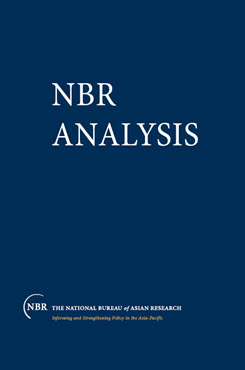NBR Analysis vol. 15, no. 2
The Russian Federation at the Dawn of the Twenty-first Century
Trapped in a Demographic Straitjacket
Although changing the direction of Russia’s demographic trajectory remains a formidable challenge, beyond mere rhetoric, the country’s political leadership and voting public continue to remain neglectful of the potential seriousness of Russia’s current, and future, demographic challenges.
Modern readers might sometimes feel that they are exposed to an almost unending stream of grim prognoses about the world population situation—and in fairness to such sensibilities, there is some justice in those same perceptions. It does often seem as if much, even most, of the contemporary commentary on population questions is extraordinarily alert to the negative— if not positively alarmist in tone. Yet just as some paranoids really do have enemies who are out to get them, so countries at times do actually suffer from serious demographic problems, for which the term “crisis” is no overstatement. The Russian Federation today is one such country. In the following pages we shall attempt to demonstrate that post–Communist Russia is today beset by what may fairly be characterized as severe, dramatic, even critical population problems.
How can we justify such a sensational description of Russia’s demographic prospects? Quite simply, because Russia’s population trends and demographic characteristics are now altering the realm of the possible for the country and its people—continuously, directly, and adversely. Russian social conditions, economic potential, military power, and international influence are today all subject to negative demographic constraints—which only stand to worsen over the years immediately ahead.
Russia is now at the brink of a steep demographic decline—a peacetime population hemorrhage framed by a collapse of the birth rate and a catastrophic surge in the death rate. The forces that have shaped the slope of depopulation and debilitation down which Russia now slides are powerful ones, and they are by now deeply rooted in the Russian landscape. Russia’s demographic and health troubles stand to act as potentially serious constraints on the country’s economic recovery and development, and may have further, adverse implications for Russian security and foreign policy. In spite of President Putin’s recognition of the acuteness of the demographic problems facing Russia, the situation remains dire. Altering Russia’s demographic trajectory would be a formidable task under any circumstances. As yet, unfortunately, neither Russia’s political leadership nor the voting public that sustains it have really even begun to sufficiently address the enormous magnitude of the country’s demographic challenges.
Negative Population Growth…
On New Year’s Day 1992—one week after the dissolution of the USSR—Russia’s population was estimated at 148.7 million. [1] As of mid–2003, according to the Russian State Statistics Committee (Goskomstat), the Russian Federation’s population was 144.5 million. [2] During its first eleven and a half…
[1] David E. Powell, “Death as a Way of Life: Russia’s Demographic Decline,” Current History, vol. 100, no. 657 (October 2002), p. 344.
[2] ITAR-TASS, August 23, 2003; reprinted as “Russia Population Remains in Decline in 2003,” in U.S. Foreign Broadcast Information Service (hereafter FBIS), FBIS-SOV-2003-0821, August 22, 2003.


